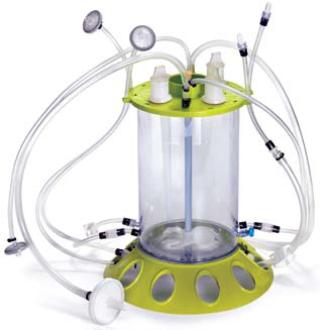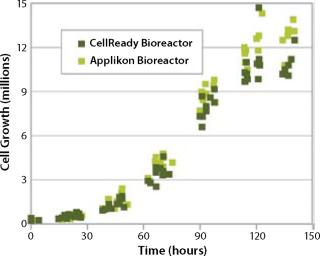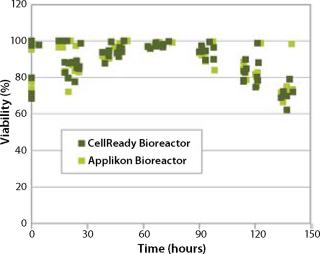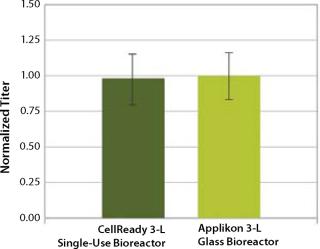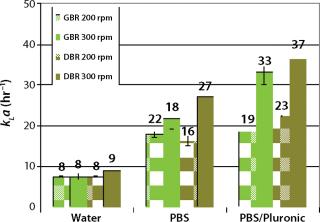The Mobius Cellready 3-L bioreactor is a single-use, stirred-tank bioreactor ideal for bench-scale cell culture of mammalian cells. The Mobius Cellready bioreactor is preassembled and gamma-irradiated to reduce set-up and cleaning times compared with glass stirred- tank reactors. It can be used right out of the box, and after a simple set-up, turn-around can be achieved in as little as a few hours.
The Mobius Cellready bioreactor has the benefit of single- use technology coupled with the familiarity of bench-top glass stirred-tank bioreactors. The system includes
-
a rigid tank design
-
prefitted, wieldable C-flex tubing and vent filter
-
gas inlet filters
-
three probe ports
-
thermo well port
-
two sparging options
-
subsurface inlet–outlet line
-
in-line septum for small-volume additions (such as antifoam) in the head plate.
The Mobius CellReady bioreactor has added functionality over traditional glass stirred-tank systems with subsurface integrated side sampling, liquid addition, and a bottom drain port for harvesting. The Mobius CellReady bioreactor integrates with most standard bioreactor controller configurations and most standard 3-L motors by a motor drive adaptor (sold separately). It is compatible with most standard 3-L scale heating blankets.
The Mobius CellReady 3-L bioreactor was designed to directly replace existing 3-L glass bioreactors, so verification was performed to show its comparable functionality to glass bioreactor vessels. The data shown here demonstrate that with regard to mammalian cell cultivation and KLa mapping, the Mobius CellReady 3-L bioreactor performs comparably to glass bioreactors. In addition, heating profiles and mixing times were compared, yielding similar mixing times (less than 10 seconds) as well as heating and heating maintenance profiles between the two vessels (data not shown).
Seven individual bioreactor runs were conducted using Applikon EZ-controls under conditions shown in Table 1 to evaluate CHO cell growth, viability, and titer comparability between the glass and Mobius CellReady 3-L bioreactor vessels. Cell viabilities were determined by trypan blue exclusion using a Vi-Cell™ counter. IgG levels were determined by ELISA specific for murine IgG. Cell counts, viabilities, and titers were determined twice daily until the viability dropped below 75% for two consecutive sampling points (Figures (1234).
KLa was determined through the static gassing-out method for both 3-L Mobius CellReady bioreactor and Applikon glass stirred-tank bioreactors. The glass vessel was fitted with Applikon’s standard pitched-blade impeller and a 15-µm microsparger. Dissolved oxygen (DO) probe initially calibrated to 100% at air saturation; brought to 2% with nitrogen before initiating each experiment. Sparge rate was 0.1 vvm with air and no overlay (2-L working volume). Each experiment was performed in 37 °C water with phosphate-buffered saline (PBS) or PBS–pluronic plus antifoam and repeated in triplicate.
Author Details
Jennifer DeKarski is a product manager at Millipore Corporation, 290 Concord Road, Billerica, MA 01821; 1-800-645-5476


